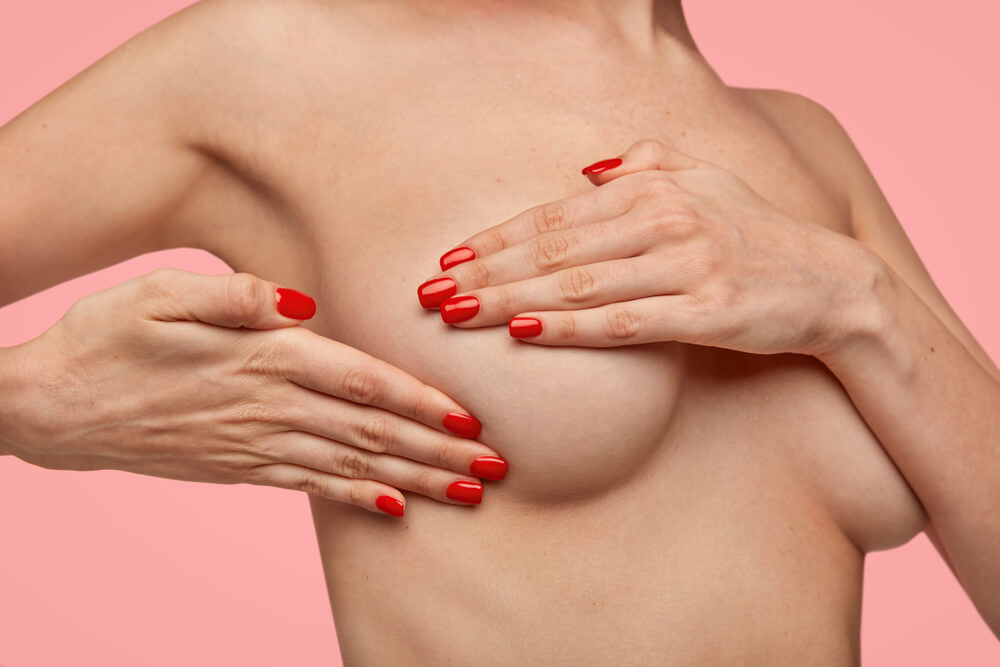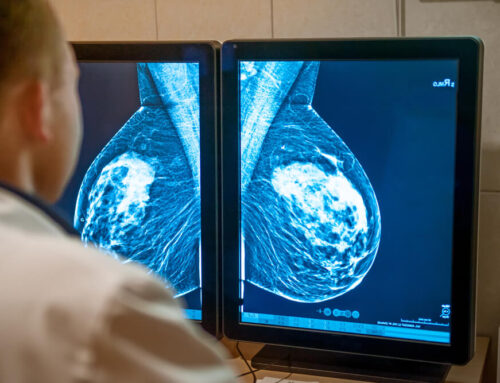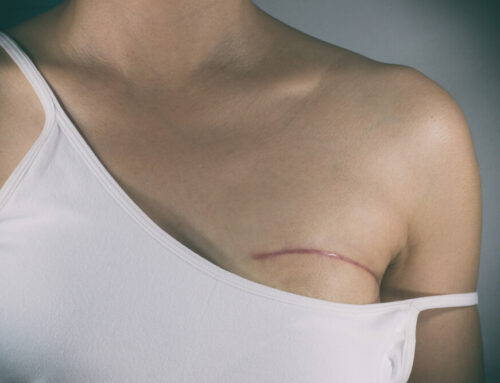Fibrocystic breast disease is a noncancerous condition that causes the breasts to feel lumpy and painful. Fibrocystic breasts aren’t harmful, but they may be uncomfortable for some women. Sometimes, we also refer to the condition as fibrocystic breast changes or fibrosclerosis of the breast.
Fibrocystic breast changes mainly affect females between ages 30-50, and many patients don’t develop any symptoms.
This article will discuss the symptoms and causes of fibrocystic breast disease. We’ll also talk about treatment options and what you can do to manage your symptoms at home.
What Are The Symptoms Of Fibrocystic Breast Disease?
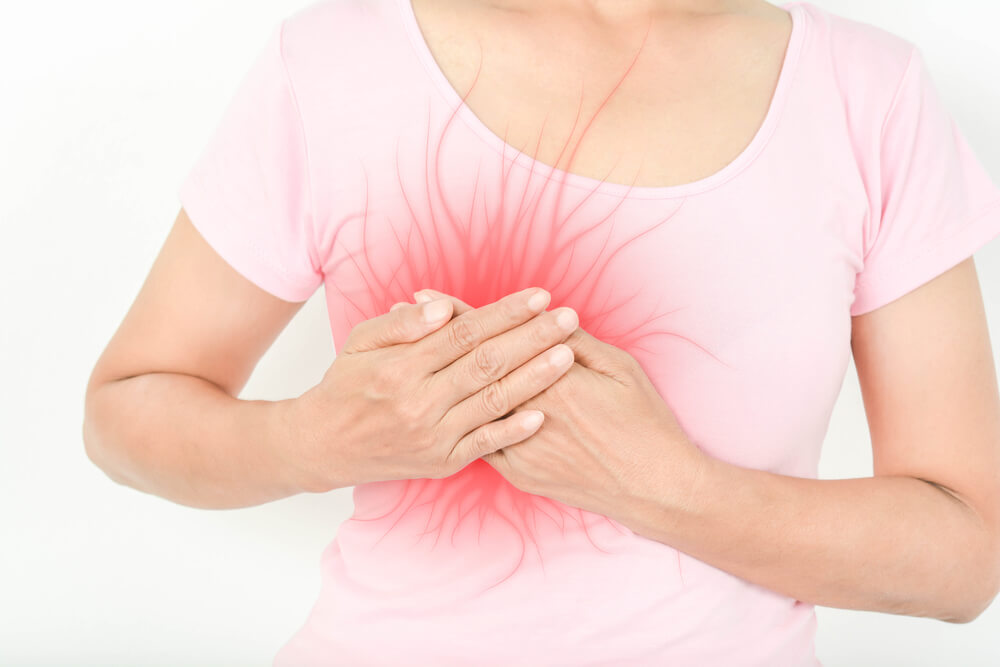
Common symptoms that can develop in women with this condition include:
- Swelling.
- Tenderness.
- Underarm pain.
- Thickening of breast tissue.
- Breast discharge.
Some people may notice that one of their breasts is more swollen than the other. Symptoms may also worsen before menstruation due to hormonal changes.
Furthermore, the lumps you have in your fibrocystic breasts may also grow in size and move during the month, but they tend to stay in one place if you have a lot of fibrous tissue.
Some women also have fibrocystic breast discharge that is green or dark brown.
Also, it is best to seek immediate medical help if you have:
- Nipple discharge that is clear, red, or bloody can signify breast cancer.
- Fibrocystic breast dimpling.
- Inverted nipples.
- New lumps.
- Worsening pain.
What Causes Fibrocystic Breast Changes?
We don’t know the exact cause of fibrocystic breast changes, but experts believe estrogen is responsible for this condition. – This is the hormone that develops and maintains the reproductive system and female characteristics, such as pubic hair.
When menstruating, your hormone levels fluctuate and can cause breast discomfort, tenderness, soreness, and swelling. The fibrocystic breast changes may feel more uncomfortable before you get your period, but you may experience some relief after your period begins.
Furthermore, when doctors examine fibrocystic breast tissue under a microscope, they may notice various components, such as fluid-filled round sacs or cysts, or enlarged breast lobules.
The condition can affect women of any age, but it is more common in those who are in their 20s to 50s.
How Do We Diagnose Fibrosclerosis Of The Breast?
We use different tests to help us evaluate your condition, such as:
- Breast exam: During this exam, we feel your breasts and lymph nodes in your lower neck and underarms as this helps us check if there’s any unusual breast tissue. If we find that you have normal breast changes, we may not recommend further tests. However, if there’s a lump or suspicious breast tissue, you may have to come for another test after your period. Then, if we see that the changes persist, you may have to get a mammogram or ultrasound.
- Mammogram: A mammogram is for patients with a breast lump or thickening of their breast tissue. This is an X-ray exam that we use to focus on an area that is concerning.
- Ultrasound: It uses sound waves to create images of the breasts, and we usually perform this in women who are younger than 30. This is because they have dense breast tissue that is tightly packed with ducts, connective tissue, and lobules. Ultrasounds also help us check whether you have fluid-filled cysts or solid masses.
- Fine-needle aspiration: This can be helpful if the breast lump feels like a cyst, as it allows us to check if we can remove the fluid from the lump.
Does It Increase Your Risk For Breast Cancer?
Fibrosclerosis of the breasts doesn’t increase your risk of breast cancer. However, breast changes may make it difficult for doctors or surgeons to spot cancerous areas when you go for a mammogram.
In addition, you can perform a breast self-exam at home, as this can help you become more familiar with how your breasts feel and notice any changes that may need further evaluation.
What Are The Treatment Options?
There are various options available if you have fibrocystic breast changes and you’re in pain:
Medications
Usually, medical professionals prescribe non-steroidal anti-inflammatory drugs (NSAIDs) to help relieve pain, such as ibuprofen or diclofenac gel.
If the pain is severe and persists for more than six months, you may have to take other medications that include tamoxifen, bromocriptine, or danazol.
Heat Therapy
A warm compress can ease pain, and you can apply it to the area you want to treat.
You can find warm compresses available for purchase online or use a hot water bottle.
Wearing A Supportive Bra
Wearing a supportive bra that is properly fitted and is not too tight can help relieve discomfort.
One article found that this type of bra can reduce pain within three months.
That said, if you need help with finding the right bra size, we recommend seeing a specialist.
Exercise
You can perform various activities to help manage fibrocystic breast pain, such as swimming, walking, tai chi, and yoga.
Also, exercising regularly can reduce body fat and increase lean body mass, and this can reduce your risk of developing fibrocystic breast disease.
Diet
Evening primrose oil contains gamma-linolenic acid, an omega-6 fatty acid that can make the breast tissues less sensitive to hormonal changes. This usually comes as a capsule and is available in drugstores.
Research studies also suggest that fish oil can also help reduce pain in people with fibrocystic breast changes.
Seeing A Doctor
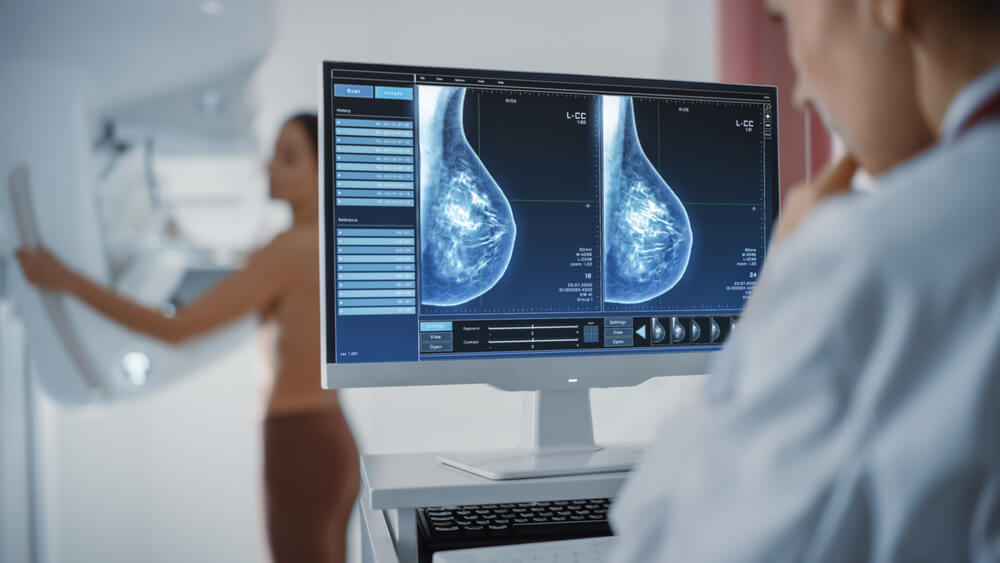
Talk to your healthcare provider if you:
- Have breast changes that persist after your period.
- Have a breast lump that seems bigger.
- Have worsening breast pain.
- Fibrocystic breast discharge.
- Thickening of breast tissue.
To prepare for your appointment, you make a list of all the symptoms you’re experiencing and any medications you’re taking, including vitamins, herbs, and supplements.
If you’ve had a mammogram in the past, you can discuss the results with your current doctor.
Furthermore, you can prepare some questions that you can ask during your medical visit. These include:
- What treatment options may work best for my condition?
- What can I do to reduce pain?
- Do I need to come for a follow-up exam?
- What happens during a mammogram?
How To Take Care Of Yourself
It is best to do a monthly breast self-exam after your period. If you’re no longer menstruating, you can check your breasts at the same time every month. You should also visit a woman’s health clinic for your yearly exam and screening mammograms.
Book Your Appointment Today
Fibrocystic breast changes can occur in women of any age group, and they can cause pain, discomfort, and nipple discharge, among other symptoms.
Various strategies can help reduce pain, such as applying warm compresses, wearing a supportive bra, and exercising regularly. Doctors may also prescribe medications.
However, you should call your doctor if you notice any changes in your breasts. Our Breast Care Center Miami team can evaluate your fibrocystic breast disease symptoms and address any other concerns you might have.
Call us now to book your appointment.



